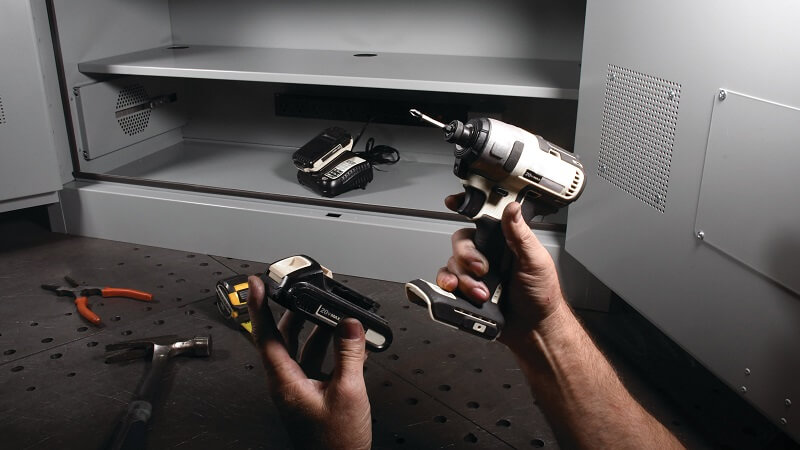Lithium-ion batteries function extensively throughout applications such as consumer electronics. And electric vehicles as well as industrial equipment. The correct storage method plays an essential role for safety purposes. And it helps to protect battery performance while extending its lifespan. Accidental storage failures result in decreased performance levels. As well as hot temperatures and dangerous fire conditions. The article presents established methods that maintain safety during lithium-ion battery storage.
1. The ideal storage temperature for batteries exists between 15°C and 25°C.
Why it’s important:
The high or low end of the temperature range damages battery cell structures. Which reduces their operational life.
The high-temperature rate speeds up chemical processes that trigger swelling alongside leakage occurrences.
Best Practices:
Batteries should be kept under temperatures ranging between 15°C and 25°C. In a dry and cool environment.
Keep lithium-ion batteries away from direct sunlight as well as heat sources.
Supposing the storage area exceeds extreme temperature ranges. Batteries must not remain there, view more.
2. Maintain Proper Charge Levels
Why it’s important:
Fully charged plus empty conditions during storage can detrimentally harm the battery chemicals.
An ideal state of battery charge lowers pressure on the battery system.
Best Practices:
The optimal storage percentage for long periods lies between 40 to 50 percent.
Each stored battery needs checking every three months and requires recharging if necessary.
3. Use Fireproof Storage Solutions
Why it’s important:
Excessive heat buildup along with fire hazards are dangerous consequences. Especially when lithium-ion batteries receive improper storage.
- Fireproof containers cut fire hazards.
Best Practices:
A fireproof battery storage case or container should be used to store batteries.
Fireproof storage solutions should always include a enough distance. Between batteries and all materials that might ignite during use.
The storage of batteries requires the use of a metal storage box to maximize protection.
4. Prevent batteries from suffering physical harm as well as exposure to moisture
Why it’s important:
The malfunctioning state of batteries leads to dangerous chemical leakage. While creating fire hazards.
Exposure to water leads to breakdowns in circuits and so leads to battery failure.
Best Practices:
The best storage practice requires batteries to remain inside their original packaging. Accompanied by a non-conductive container.
Frequent placement of heavy materials on top of batteries must be avoided.
Store these batteries in dry conditions at a distance from humid and water-containing sites.
5. Follow Manufacturer Guidelines
Why it’s important:
- Each battery may have specific storage requirements depending on its chemistry and design.
- Manufacturer recommendations help ensure safe handling and longevity.
Best Practices:
- Refer to the storage instructions provided by a Reliable Lithium Ion Battery Manufacturer.
- Follow manufacturer guidelines for disposal and recycling of old batteries.
Conclusion
Proper storage of lithium-ion batteries is crucial for maintaining performance. Ensuring safety, and extending their lifespan. Keeping them at optimal temperature, maintaining the right charge level. Using fireproof storage solutions, and following manufacturer guidelines are all key steps. Always buy from a Reliable Lithium Ion Battery Manufacturer to ensure high-quality. And safe battery solutions.
